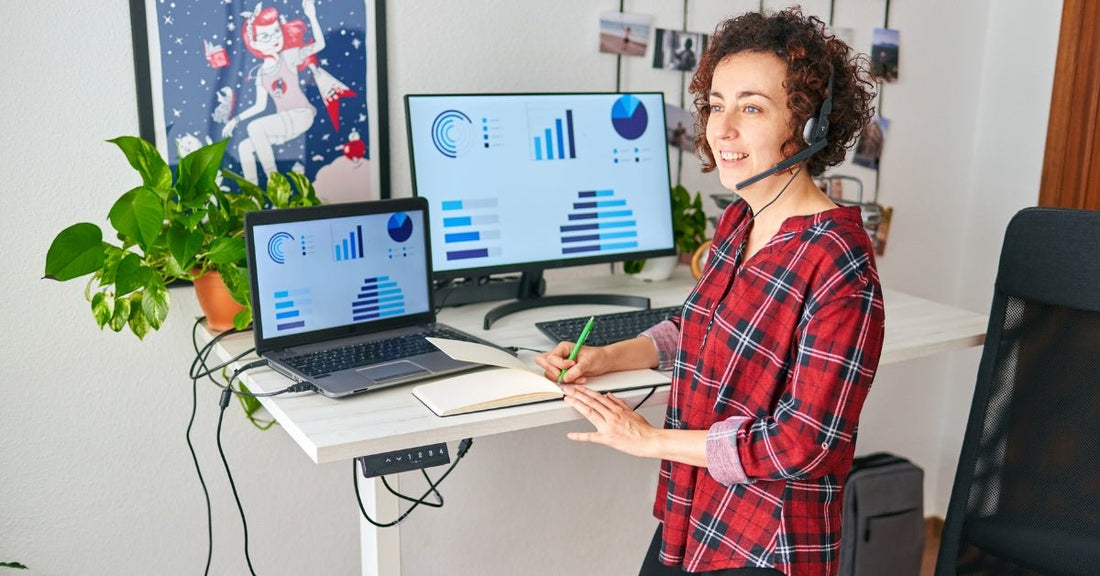
Exploring the Future of Standing Desks
Lately, the way we work in offices has changed a lot. Instead of sitting all day, there's a move towards more active and adjustable work environments. Leading this change are standing desks, which show how today's workplaces are focusing on staying healthy, being more productive, and adapting to different needs. Looking forward, standing desks are set to bring even more new ideas and designs that fit various ways people like to work. This blog explores the latest trends, tech developments, and research on ergonomics shaping the future of standing desks.
The Rise of Standing Desks
The concept of working on your feet isn't a recent discovery. Famous figures like Leonardo da Vinci and Winston Churchill were known to work standing up. But it was in the early 2000s that standing desks took off. As people started understanding the health risks of sitting too long, such as heart problems and diabetes, the demand for standing desks grew. This, combined with better design for comfort, has made standing desks a common sight not just at home, but in offices too.
Innovations in Design and Technology
Standing desks are no longer just basic surfaces that can be adjusted for height. Thanks to improvements in design and technology, they're becoming more flexible, personalized, and a seamless part of our work life.
Smart Desks
The future of standing desks looks exciting with the addition of smart technology. Imagine having a desk equipped with sensors and AI that can learn what you like and automatically adjust its height to keep you comfortable and productive throughout the day. These advanced desks could also monitor your sitting and standing times, remind you to switch positions and suggest ways to improve your posture.
Integrated Wellness Features
Upcoming standing desks could focus more on keeping users healthy and happy. They might include features like UV lights to help with vitamin D, air cleaners, and even systems to play calming music to reduce stress. Also, they could have exercise options like treadmills or bikes under the desk to encourage moving more during the day.
Customization and Flexibility
Standing desks will become increasingly customizable in the future. Users may customize their desks by adding or removing components such as monitor stands, keyboard trays, and storage solutions. Standing desks will also be able to blend in with a wide range of home and business decor thanks to their material and finish flexibility.
Ergonomic Advances
Ergonomics studies how to improve people's efficiency at work, and it's why standing desks were invented. In the future, ergonomics will aim to design desks that can change in height, position, and shape to fit different tasks, body sizes, and work styles. This could mean desks that easily switch from sitting to standing or even walking positions and desks with surfaces that adjust to reduce strain on arms and wrists while typing.
Environmental Sustainability
As people become more worried about the environment, they want office furniture that doesn't harm the planet. Manufacturers of standing desks are responding by using eco-friendly materials like bamboo, recyclable plastics, and reclaimed wood. They're also focusing on making furniture that lasts longer and can be easily repaired. This approach helps cut down on the need to constantly replace items, reducing waste.
Conclusion
Standing desks are set to become even more popular in the future, with new features that aim to boost health, productivity, and comfort at work. The next generation of standing desks will be much more advanced than the current models that simply adjust in height. They will include smart technology, be designed with better ergonomics in mind, and be more environmentally friendly. As we keep looking for ways to work more effectively and healthily, standing desks will be a key element in the design of future office spaces. Whether used at home or in the office, these improvements will help create work environments that are more flexible, responsive, and focused on well-being.
